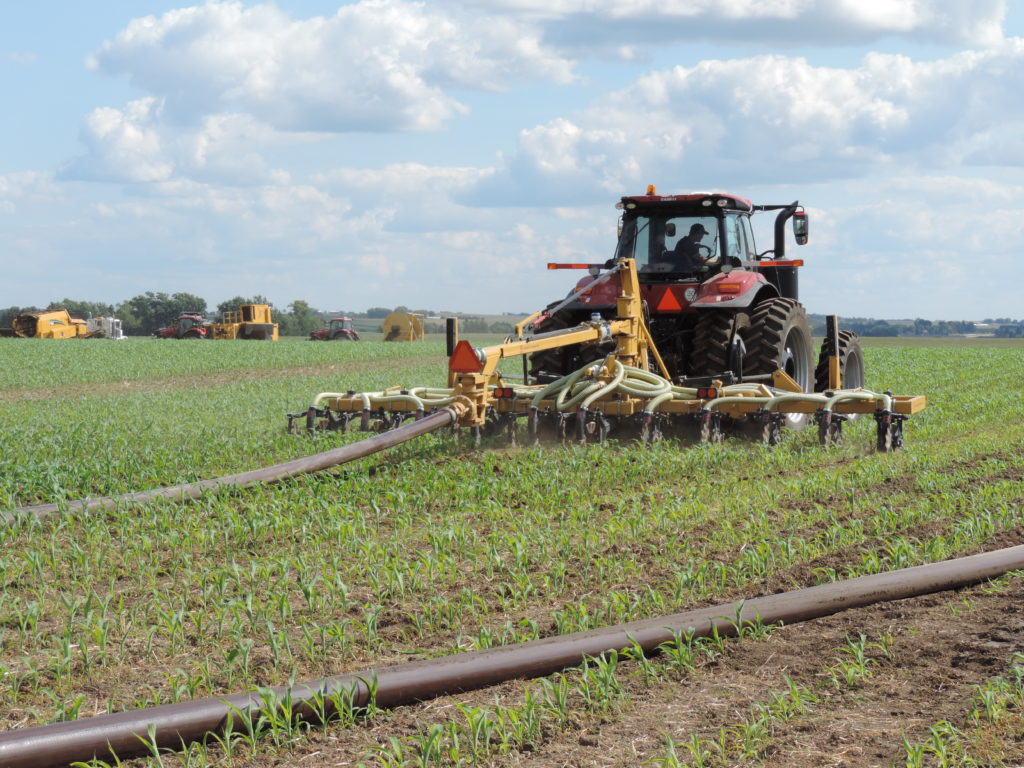Timely planting of corn followed by in-crop application up to V-4 leaf stage of corn can increase yield, reduce compaction, and increase nutrient use efficiency

Are you envious of your crop neighbours that don’t have to worry about manure application on top of all the other spring work? Yes, spring 2019 has had a slow start, but rushing onto unfit soils with heavy equipment will only increase compaction damage and create more headaches later in the season.
Consider planting at least some of the corn when soils are finally fit for planting, and then drag-hose the liquid manure after planting sometime before the corn gets to 4th leaf stage. Not only will it improve nutrient use efficiency, but manure can be applied when soil conditions are more suitable which will help prevent compaction, improve yield and can spread out some of the manure application workload.

Many custom applicators have surface applied manure into standing corn in the past – some with tanker and some with drag-hose systems, but finding the balance for application without negatively impacting corn population has prevented this practice from wide application. In Ohio, over the past number of years, Glen Arnold has experimented with drag-hose application at different corn growth stages to determine the maximum growth stage for application without negatively impacting crop population or yield potential. The results of 4 years of This has been tried over the past number of years in Ohio where a drag hose (without manure) was dragged over the corn at various stages of corn growth as shown in Table 1 below.

In a separate Ohio study, finisher manure drag-hosed at V-3 leaf stage was compared to application of 28 % nitrogen. Improved yield (shown in Table 2) from manure indicates some of the other benefits that manure can provide to crops, including the contribution from other nutrients such as sulfur, and the benefits of feeding the microbial population in the soil to enhance nutrient cycling.

The economics of in-crop application will vary with more or less concentrated manure, however, when early spring pre-plant application is compared to in-crop injection there is a cost advantage for in-crop application regardless of whether the manure is dairy, finisher or SEW sow. Consider the reduction on nitrogen requirements for side-dress timing and the cost savings for commercial nitrogen not applied, along with the increased yield and reduced soil compaction.
In-crop application into standing corn currently will not work on every farm, but the industry is moving forward to introduce new technology and equipment that will enhance the opportunity to apply more manure during the growing season; whether to cereal, forage, corn or cover crops. The benefits of right time and right place for manure application during the growing season can reduce the stress of trying to get storage capacity during a late harvest season ahead of winter.